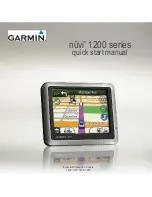
_________________________________________________________
GNS 400W Series Maintenance Manual
Page 3-3
190-00356-05
Rev. A
protection diodes and transorbs, the circuit is laid out so the lightning currents do not go through
the EMI beads.
Com Board Interface
The Com Board interface is connected to the Com Board via J11. The interface includes power
from the com power supply, +5v and ±12v, along with serial RxD and TxD, and the volume
control knob voltage. The Com Board is controlled by the main CPU through the serial interface,
and the Com Board returns status to the Main CPU.
Nav/Glideslope Board Interface
The Nav/GS interface is connected to the Nav Board via J9. The interface includes power
supplies, +5v and ±12v, along with serial interfaces for both the Nav and GS functions, and the
Nav Volume Control Knob voltage. The Nav Board is controlled by the main CPU through the
Nav Serial Interface, and the Nav Board returns status to the Main CPU. The GS Board is
controlled by the Main CPU through the GS Serial Interface, and the GS Board returns status to
the Main CPU. The GS Board Interface is physically looped through the Nav Board.
WAAS GPS Board Interface
The WAAS GPS Board connects with the Main Board via J8. This interface in5v power
for the GPS engine along with a serial interface and a battery connection. The WAAS Engine
provides position and navigation data to the Main CPU via the serial interface, and the Main CPU
sends commands to the WAAS Engine via the serial interface.
Inverter Board Interface
The Inverter Board includes the driver for the LCD CCFT backlight. The power and control
signals are connected to the interface board via P13.
Memory Backup Battery
The Main Board includes a 3-volt Lithium Battery. The battery is connected to the WAAS GPS
Interface Connector and is used for the real time clock and memory backup. If the battery is not
replaced and becomes completely discharged, the unit will remain fully operational but the GPS
signal acquisition time may be increased.
3.2
VHF COMMUNICATIONS TRANSCEIVER (COM BOARD)
The Com Transceiver provides voice communication in the 118.000 to 136.975 MHz general
aviation band. The transceiver consists of a 10 watt amplitude-modulated transmitter, and a single
conversion superhetrodyne AM receiver. A 16 watt transmitter option is also available.
The transmitter is a Class 4 and 6 (10 Watt), or a Class 3 and 5 (16 Watt) device as described in
RTCA DO-186a, indicating that it has channel spacing modes of 8.33 kHz and 25 kHz, and is
intended for a communications range of 100 (10 Watt) or 200 (16 Watt) nautical miles. The
receiver is a Class C and E device as described in RTCA DO-186a, indicating that it has channel
spacing modes of 8.33 kHz and 25 kHz, with offset carrier capability in 25 kHz mode.















































